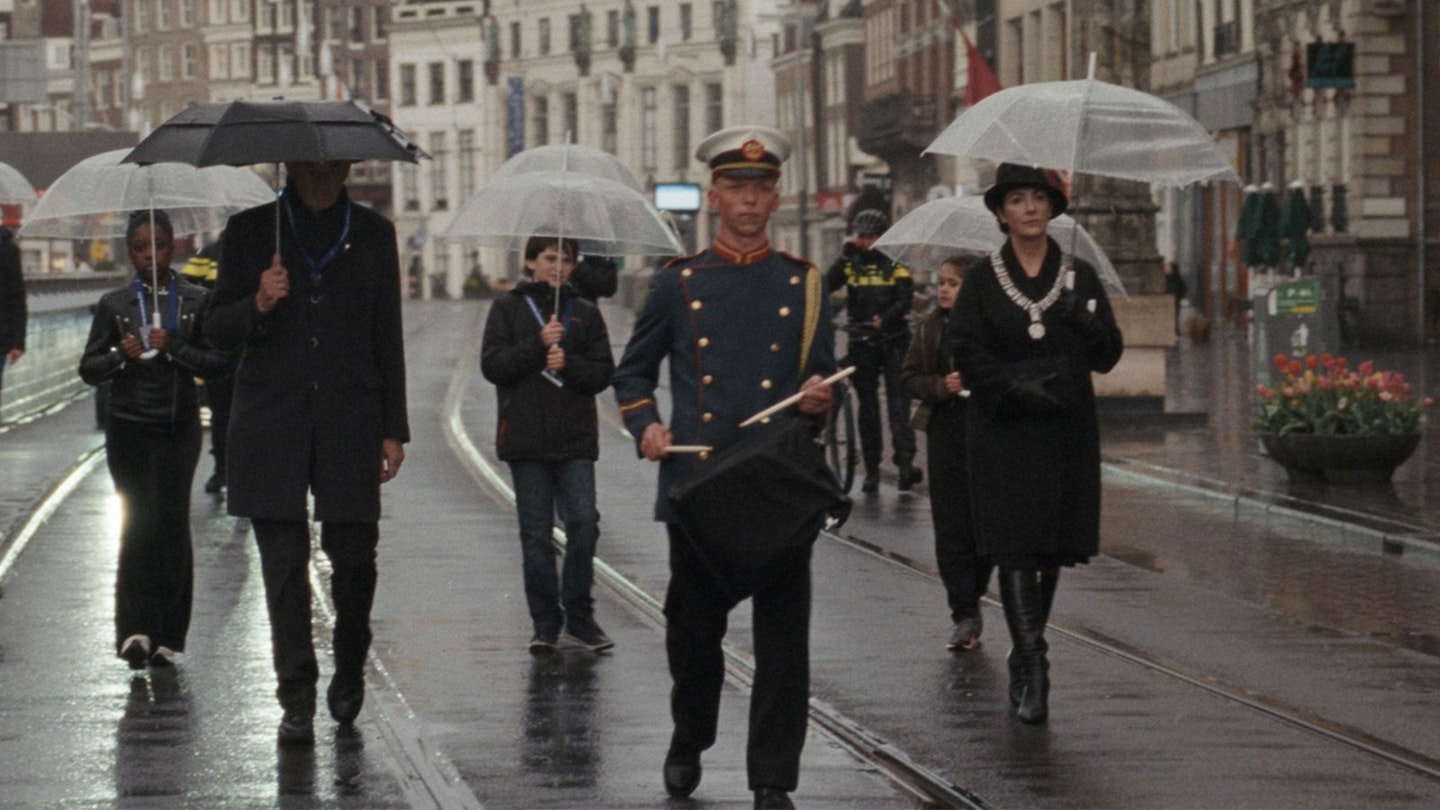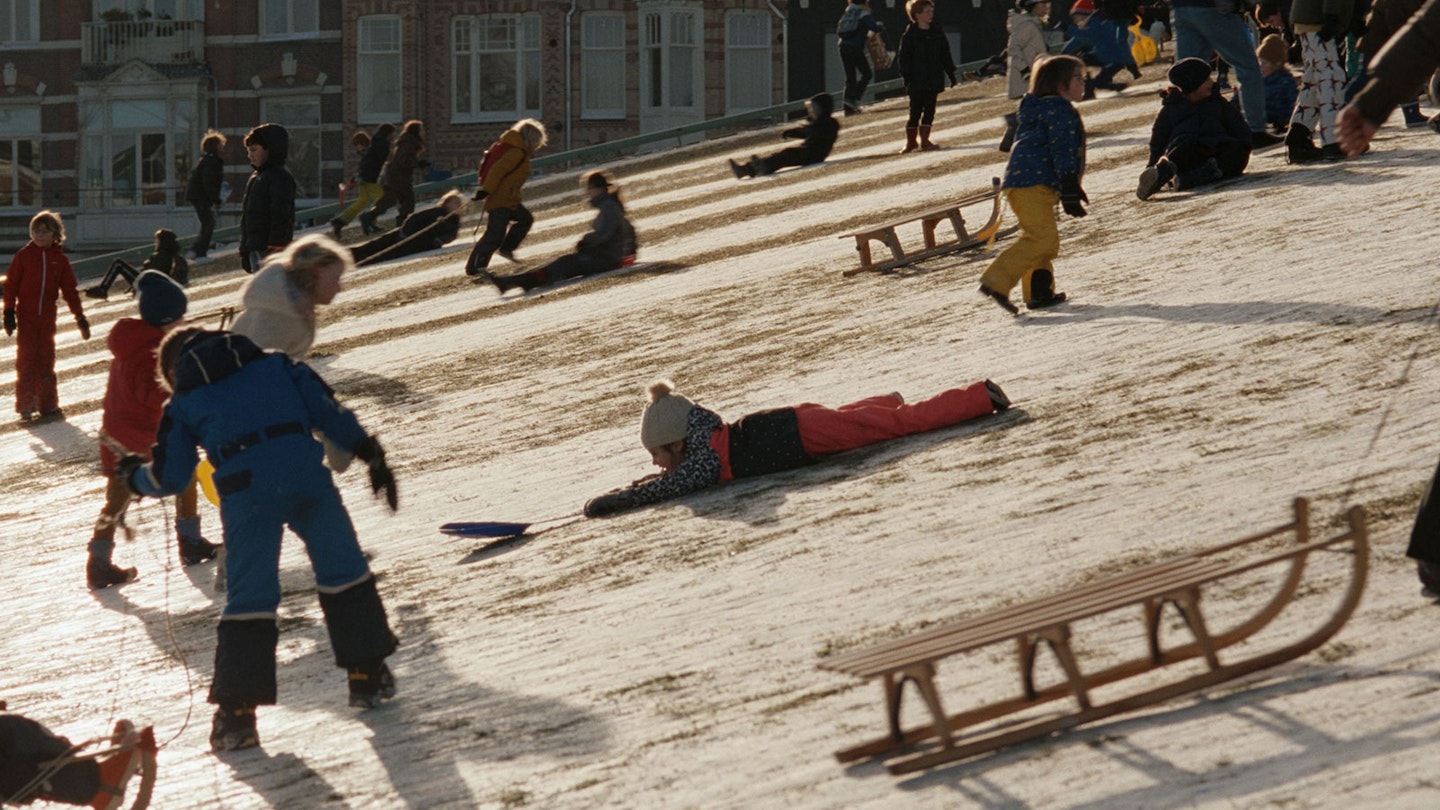Much of director Steve McQueen’s best work has come from the close observation of people under the thumb of fascism; the filmmaker and visual artist is clearly interested in — and hopeful about — the resistance to such oppression. Occupied City, adapted from the book Atlas Of An Occupied City, Amsterdam 1940-1945 by his wife and creative partner Bianca Stigter, is a much broader and more kaleidoscopic study than films like Hunger, and a little less personal than his astounding Small Axe project.

Through examination of Amsterdam’s buildings, with detailed narration offering historical context about the city as it was held by the Nazis in the Second World War, the film quite literally goes building-by-building: looking at a place in the present, while narrator Melanie Hyams talks through who lived there in the 1940s and what became of them. This is a window into the past, as well as into the contemporary lives of the people living there now. Shot during the pandemic, it’s a contrast of reflection and observation: chilly narration of the past, laid over beautiful and hypnotic photography, shot in boxy Academy ratio. The camera roams the city as if searching for visual evidence of the scars of occupation, and what they might say about now.
McQueen’s visual direction quietly builds a sense of togetherness in spite of the tumultuous history being told.
Across a nearly four-and-a-half-hour runtime, it adds up to a frankly overwhelming amount of information, which can be difficult to condense and process. It’s easier to acknowledge how McQueen recontextualises all this information: juxtaposing imagery of the present and narration of the past and examining how the two resonate. He makes frequent connections to contemporary activism, concerning modern threats of annihilation, violence or disaster; the camera, notably, captures some aggressive police crackdowns.
McQueen’s visual direction quietly builds a sense of togetherness in spite of the tumultuous history being told. It’s invigorating witnessing a protest against anti-refugee rhetoric, its speakers acknowledging Black lives in the US, as well as the hypocrisy of white supremacy. Another moving scene shows a Bar Mitzvah rehearsal for a young, mixed-race Jewish boy; that dual heritage suggesting a significant distance from the city’s supremacist, oppressive history.
As the film traverses the city, it finds hopeful imagery: people skating on a frozen river; people sledging down a frozen hill to a disco soundtrack; people relaxing in their homes and going about their business. Even these simple scenes are an example of hard-won freedoms, a conscious contrast to the city’s fascist past. It all accumulates to become an overwhelming anthropological project —one that paints a moving picture of perseverance, intersectionality and solidarity.
